
Review on 🖥️ Geekworm Raspberry Pi 4 Case: Ultra-Thin Aluminum Alloy Passive Cooling & Heatsink Case for Raspberry Pi 4B – Compatible with Pi 4 Model B (N300) by Dana Manning

Overall a great design with some caveats. Better port coverage than almost everyone else.
Overall this bag has a great design. However, I have two (maybe three) complaints: First, it's not designed to support active cooling at all. There is nowhere to install the fan, and this is the lower part (most likely sitting on the surface) with the radiator part of the structure. If you normally use the RPi4 it should have an equilibrium temperature within a safe range, but if you overclock or use it heavily it might start to rise a bit higher than ideal for the longest possible run. use. (In my own testing, the temperature never got close to the throttle temp. This was in a room where fairly optimal temperature and good airflow are maintained, and much higher balance can be achieved in less than ideal conditions.) Second, choice The placement of the cooling fins on the underside is a design choice that reduces their effectiveness in many ways. On the one hand the top is flat because it's designed to work with HATs, on the other hand the top is the part that makes direct contact with the CPU and RAM chips, not the bottom - so heat should be dissipated much less efficiently from it one side to the other. This is also a problem as the underside can lie fairly flat to the surface and suffer from a lack of airflow as a result (although they offer rubber feet for floor mounting that lift them up at least a millimeter or two). The top could still have at least a few small dimples to give it a little more direct spreading ability. It wouldn't be as effective as full combs, but it would still be an improvement. I really wish they would at least offer a fan option with room to mount one or something (it doesn't need to include a fan as they can be purchased separately, just mount holes over some holes or a raised area). It can be installed. somewhere off the surface - after all, there are screw holes on the bottom - and even to accommodate an external fan, but that complicates the overall design significantly. I've added a couple of short heatsinks at the top as I don't plan on using the HAT at the moment and that seems to have helped a lot, but without active cooling it can still get pretty hot. However, this is far from the thermal throttling temperature under normal conditions. I didn't have enough time to test the max temperature under continuous load, but from what I tested it didn't go above 60C for about an hour, I could load it constantly. You'll probably never want to use this for factoring or folding or anything else (much less efficient than a good CL-accelerated design), so I really think a full stress test, even when overclocking, doesn't indicate normal usage. I may have a third complaint which I think affects WiFi stability, but this hasn't been thoroughly tested and verified yet (I mainly use Ethernet). It's anecdotal, but the RPi it contains has had significantly worse WiFi performance and reliability since installation. But since it hasn't been tested or overclocked much, I can't confirm that at this point in time. Otherwise I can only say positive things about it. The *IS* design is really good overall. The cooling fins on the bottom are strong enough to ensure good heat dissipation. The whole body is also in good contact with itself. Most of these metal cases don't connect the top and bottom directly at all. They are usually located on either end of the RPi PCB without protruding from the board, so the only real thermal connection between one end and the other is the screws holding the two sides together. Since the top metal and the bottom metal are in direct contact with each other, the heat transfer efficiency is much higher from top to bottom (so the whole thing is a heatsink, not just the top as in most cases). ). Metal case.) I've taken this a step further by putting a very small amount of thermal paste in between and find this exceptionally effective, although I wouldn't say it's absolutely necessary. is a real fence, but extremely minimal. It barely protrudes above the circuit board but still comes out. This protects the RPi itself from a lot of things, but most importantly the connectors sit tight in the case. This makes it almost impossible to lift one of them too far and pull it out of the board (yes I saw that). I believe this should protect the RPi itself from pretty much everything (although the USB and ethernet ports would be vulnerable to something really extreme). However, I think not many people drive cars on their RPs, so that probably covers the most realistic scenarios. All in all, this is definitely a great case. I absolutely recommend it if you're using external Wi-Fi or Ethernet, but more testing is needed if you're using internal Wi-Fi.
- Great fit for me
- No instructions
New products
Comments (0)
Top products in 🖥️. Single Board Computers

55" TV LG OLED55C2RLA 2022 HDR, OLED, dark titanium

38 Review
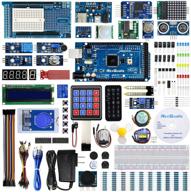
REXQualis Comprehensive Starter Kit with Arduino MEGA 2560 & Detailed Tutorial for Arduino IDE Compatibility

11 Review
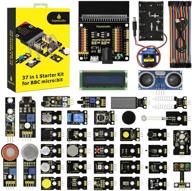
🎁 Ultimate BBC Micro bit Sensor Starter Kit: Keyestudio 37-in-1 Box with Tutorial, Compatible with V1.5 & V2, Gift for Kids and Adults (Microbit Board Not Included)

11 Review

Vilros Raspberry Pi 4 4GB Complete Starter Kit - Black Fan-Cooled Aluminum Case for Heavy-Duty Performance

12 Review
Another interesting products
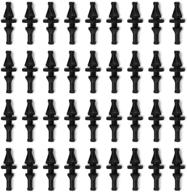
36-Pack Black Rubber PC CPU/Case Fan Screws/Rivets Set for Computer

11 Review
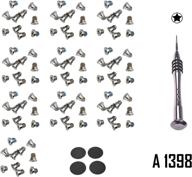
🔧 Premium Repair Replacement Screws & Tools for MacBook Pro Retina 15"/13" - Complete Bottom Case Set

10 Review
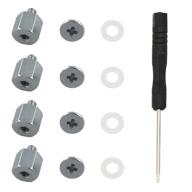
M.2 Screw Kit: Easy Mounting for NVMe SSDs on ASUS Motherboards

19 Review
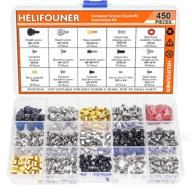
🖥️ Helifouner 450-Piece Computer Standoffs Spacer Screws Kit: Ideal for Hard Drive, Motherboard, Fan, Power Graphics & Computer Cases

10 Review

